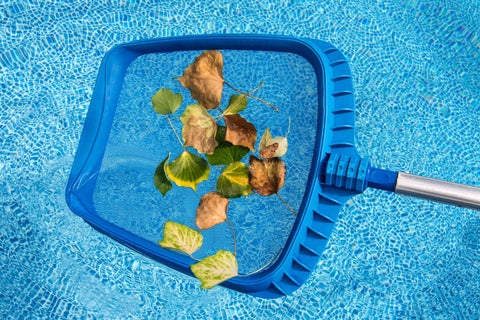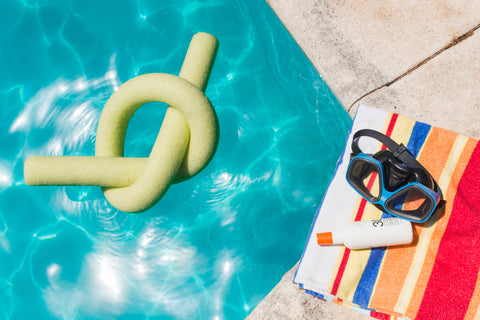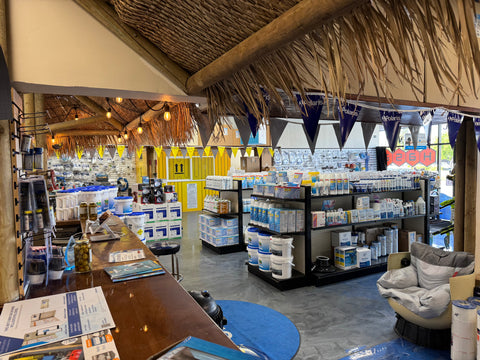Let’s be honest—keeping your backyard pool sparkling and inviting isn’t exactly a one-and-done deal. You’ll need a handful of essential pool supplies if you want the water to stay clean, safe, and ready for a swim. We’re talking chlorine, filtration systems, pumps, covers—the whole kit and caboodle. These all work together so your pool’s in tip-top shape all season long. Honestly, wrapping your head around swimming pool supplies is a game-changer. It makes maintenance easier. It helps your equipment last longer. You can enjoy your pool instead of just working on it.
But let’s face it, figuring out what you actually need can get overwhelming fast. There are so many options out there. From simple cleaning tools to advanced filtration and chemical systems, the right mix is key for healthy water. When used correctly, these supplies greatly improve water clarity, safety, and comfort for anyone swimming.
This guide cuts through the noise and gets right to the essentials—what you really need for straightforward pool care and maximum enjoyment. We will look at the tools and equipment that help backyard pool owners. This way, you can spend less time worrying and more time swimming.
Essential Pool Supplies and Equipment
Let’s talk about the basics. To keep a backyard pool in good shape, you need some tools and products. These help keep your water clean, safe, and nice to look at. Here’s a list of the gear you need for water circulation, cleaning, and chemical balancing. This equipment helps make pool care easier and less time-consuming.
Water Circulation and Filtration
Good water circulation is non-negotiable. Without it, you end up with stagnant water, uneven chemicals, and a breeding ground for who-knows-what. The pool pump pushes water through your filtration system—whether that’s a sand filter, cartridge filter, or diatomaceous earth (DE) filter.
- Sand filters are easy-going and trap debris in a sand bed, but they’re not the best for really fine particles.
- Cartridge filters catch smaller stuff but need more frequent cleaning. Not a huge deal, but worth noting.
- DE filters go the extra mile and grab even tinier particles, though you’ll have to backwash and top off the DE pretty regularly.
Don’t forget to use a pool filter cleaner now and then—it’ll help keep your filters running smoothly. Staying on top of filtration and circulation means fewer algae issues and better sanitizer performance. Who doesn’t want that?
Pool Cleaning Tools
Cleaning is just part of owning a pool. Regularly scooping out debris and scrubbing surfaces keeps things looking good and prevents your filtration equipment from working overtime. Here’s what you’ll want:
- Pool brushes for scrubbing walls and floors—seriously, don’t skip this if you want to avoid algae.
- Pool nets and leaf skimmers to snag floating leaves, bugs, and whatever else lands in the water.
- Leaf rakes for bigger debris that sinks to the bottom (it happens more than you’d think).
- Manual vacuums or robotic pool vacuums to pick up settled dirt and particles. The robotic ones are kind of awesome—they’ll do most of the work for you if you set them up right.
Using these tools regularly keeps your pool clear of visible gunk and helps maintain a safer, more pleasant swimming spot.
Chemical Treatment Essentials
Here’s where things get a little science-y. You’ve got to keep the chemical balance in check if you want your pool to stay safe and clear. The main chemicals include:
- Chlorine and bromine—these are your main sanitizers, killing bacteria and keeping algae at bay.
- Chlorine tablets for a steady, slow-release of chlorine (super handy for busy weeks).
- Shocks or shock treatments to quickly bump up sanitizer levels and zap contaminants when things get out of whack.
- Algaecides to prevent and control algae—especially during those hot, muggy stretches.
- Biguanide—a non-chlorine sanitizer that’s a good pick if you’ve got sensitive skin or allergies.
Just make sure you’re choosing and dosing these based on your pool’s size and how much it’s used. It’s not rocket science, but a little attention here goes a long way for clear, healthy water.
Testing and Water Quality Management
Testing isn’t the most exciting part of pool ownership, but it’s super important. Regular checks keep your chemical levels where they should be and help you avoid bigger problems down the line.
- Pool testing kits and water test kits—these usually come as strips or liquid tests to check pH, chlorine, alkalinity, and calcium hardness.
- Getting accurate readings helps you add just the right amount of chemicals—no more, no less.
- Staying on top of this prevents stuff like corrosion, scaling, or surprise algae outbreaks.
Keeping up with water quality means safer swimming and longer-lasting pool gear. It’s worth the couple of minutes, trust me.
Pool Accessories, Safety, and Enjoyment
There’s more to a backyard pool than just keeping it clean. The right accessories make it safer, more fun, and just plain easier to manage. Whether you’re into lounging, entertaining, or just want peace of mind, these extras can make a real difference for all kinds of pools and pool owners.
Covers and Protective Gear
Pool covers are a must-have, no question. They keep out leaves, bugs, and whatever the wind blows in, plus they help with temperature control. A solar pool cover (or solar blanket) can actually warm up your water by soaking up sunlight—nice bonus if you hate cold water. When it gets chilly, a winter pool coverkeeps out debris and helps prevent algae from taking over.
Covers also add a layer of safety by making it harder for kids or pets to accidentally fall in. Inground pools usually go with heavy-duty safety covers, while above-ground setups tend to use reinforced winter or solar covers. Using your cover regularly isn’t just about tidiness—it also helps your equipment last longer and cuts down on chemical use.
Safety Supplies
Safety comes first, always. A solid fence with a locking gate is your best bet for keeping unsupervised guests out. Pool alarms are a smart backup—they’ll let you know if someone sneaks in when they shouldn’t.
Inside the pool area, keep a first aid kit somewhere you can grab it fast. Don’t forget about rescue gearlike life rings or a shepherd’s hook. Some clear signage and good lighting also help, especially if you’re swimming after dark. Better safe than sorry, right?
Fun Accessories and Entertainment
Let’s not forget the fun stuff. Pool floats and noodles make lounging a lot more relaxing, and games like pool volleyball or basketball bring out everyone’s competitive side.
If you’re hosting, a waterproof outdoor cooler nearby is a lifesaver—nobody wants to run inside for drinks during a pool party. Storage bins help keep toys and gear organized so your yard doesn’t look like a disaster zone. With the right mix of comfort and entertainment, your backyard pool can turn into a true oasis—and isn’t that the dream?
Pool Types and Special Considerations
Each type of pool comes with its own quirks—and honestly, its own set of must-have accessories. Fiberglass pools, for example, have those silky-smooth surfaces, so you’ll want to stick with gentle cleaning tools and covers that won’t scuff or scratch anything. And if you’ve got an above-ground pool, you’re probably looking at special safety gear like wrap-around fencing and covers made just for those unique shapes.
Inground pools? They’re pretty versatile, but it’s smart to double up on safety features and invest in good seasonal covers. If you add a connected spa, that just takes the whole setup up a notch—more ways to relax, right? Honestly, knowing the differences in structure and materials really makes it easier to pick the right accessories, so you can keep things safe and running smoothly.





